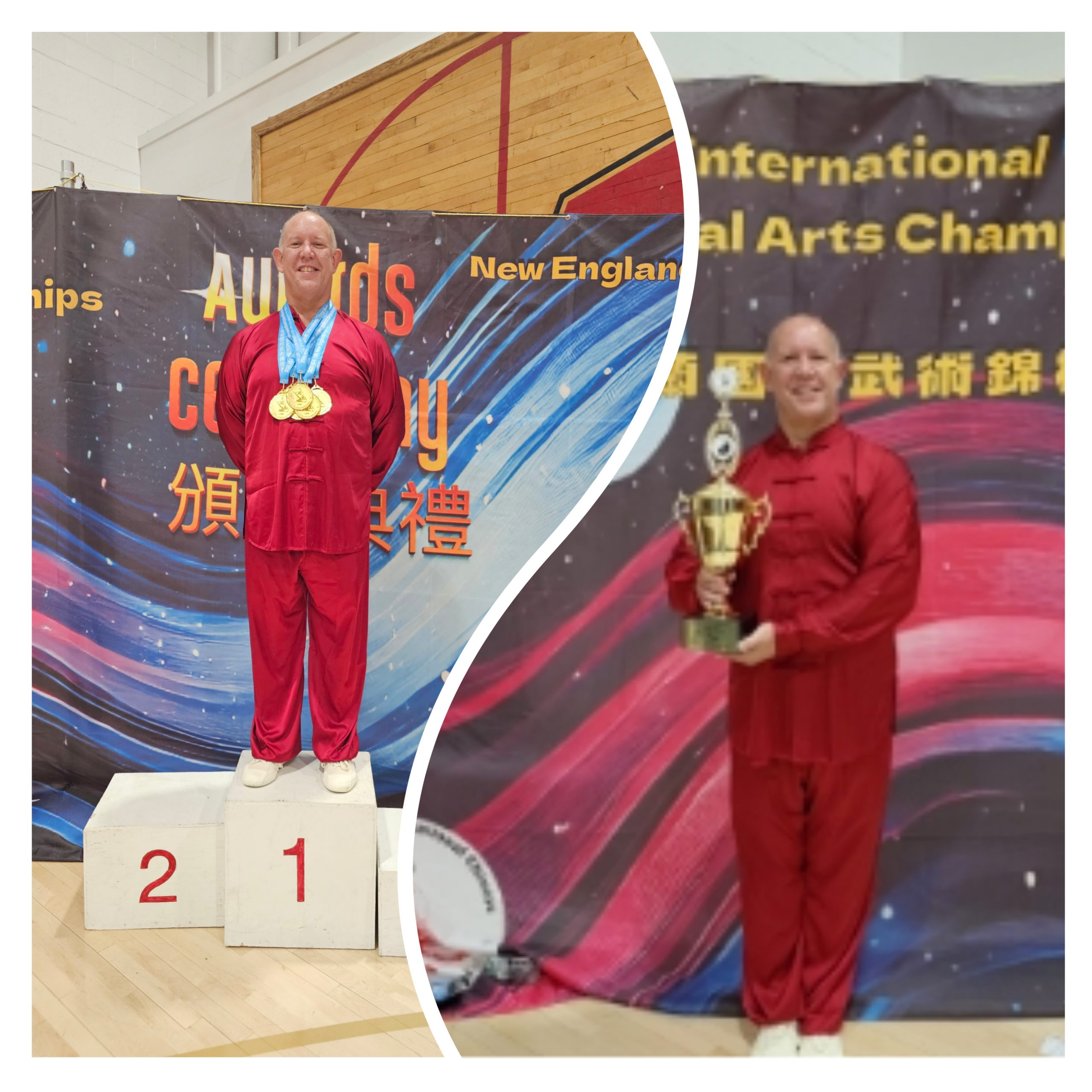Wisconsin Tai Chi Academy’s Founder and Head Instructor, Sifu Ray Gates, has successfully won six gold medals and the USA National Tai Chi Grand Champion Cup for his gender and
Tag: tai chi ch’uan

WTCA Celebrates Ten Years of Teaching Tai ChiWTCA Celebrates Ten Years of Teaching Tai Chi
This year Wisconsin Tai Chi Academy celebrates its tenth year of providing classes and other services in Tai Chi and Qigong. Established by Founder and Head Instructor, Sifu Ray Gates,

WTCA Joins USAWKFWTCA Joins USAWKF
Wisconsin Tai Chi Academy (WTCA) is pleased to announce it has become a member school of the United States of America Wushu Kungfu Federation (USAWKF). “We’ve had several students attend

Tai Chi or Qigong – Which is Right for You?Tai Chi or Qigong – Which is Right for You?
As scientific evidence grows for the health and wellbeing benefits of mind-body practices, Tai Chi and Qigong are becoming more popular and highly sought after. But what is the difference

WTCA Nominated for 2024 Community Choice AwardsWTCA Nominated for 2024 Community Choice Awards
Wisconsin Tai Chi Academy has been successfully nominated for the Milwaukee Journal Sentinal’s 2024 Community Choice Awards in the category of Sports and Fitness – Fitness Center/Gym. Founder and Head

Tai Chi Improves Balance by Increasing Your Body’s Self-AwarenessTai Chi Improves Balance by Increasing Your Body’s Self-Awareness
It’s well known and scientifically proven that Tai Chi can make great improvements in a person’s balance. What’s less talked about is how these improvements happen: what changes does the

Does Tai Chi Make You Happier? Research Says: Yes!Does Tai Chi Make You Happier? Research Says: Yes!
Though I might be biased, I’ve known for many years that Tai Chi makes you happier; I wouldn’t have been practicing and teaching over 20 years if it didn’t! There

WTCA Launches New Youth Scholarship AwardWTCA Launches New Youth Scholarship Award
Wisconsin Tai Chi Academy has launched its new Youth Scholarship Award, with two scholarships being offered for young people aged between 15 and 24 years of age in 2024. The

Debunking the Myths: The Difference Between Tai Chi and TaijiquanDebunking the Myths: The Difference Between Tai Chi and Taijiquan
What’s in a name? When it comes to Tai Chi, there seems to be a lot more than there should be! Much of the general public has at least heard

Debunking the Myths: You Can Learn Tai Chi from a Video/BookDebunking the Myths: You Can Learn Tai Chi from a Video/Book
I’m just going to come straight out and say it: you cannot learn Tai Chi from a video or a book. Before you consider arguing with me, let me qualify

